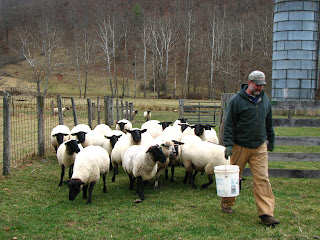 |
| The sky bridge. |
“Warning, warning! Danger, danger!” The voice of reason reverberates from my head to my heart to my stomach. I am staring at a sky bridge, strung from the ground to a platform two stories above my head. I am belted, clipped and helmeted, but I am still not sure I can make the climb. In fact the pounding rhythm of my heart belies the fact that this whole zip line thing was my idea. It seemed like a good way to get beyond my fear of heights, but now I’m not so sure. A crazily canted rope ladder to the sky is eroding my resolve one panicky heart beat at a time.
I’ve come to Banning Mills with my intrepid sister, Meg. We are together for one of my favorite events of the year—our annual sister trip. In past years we’ve kayaked the Ashley River, galloped along the white sands of Amelia Island and now here we are perched on the edge of certain death on the rim of a gorge south of Atlanta.
Meg clips on…. “Transfer 1” Click! “Transfer 2” Click! Then she turns and starts up the wobbly stairway to the sky. It is too late. I have no choice but to follow her. I transfer my clips to the overhead wire, my hands shaking so badly that I cannot close them properly. My mouth is dry, my palms slick with sweat. Keeping my eyes focused on Meg’s red jacket which is now rising to the heavens above me, I take my first step towards a new adventure.
It seems I’ve always been following two steps behind my big sis. Shy when she was younger, Meg has since been scuba diving, high mountain skiing, and even at one time in her life rappelled down the side of a cliff.
I finally reach the platform fifty feet above. Our guide gives us a few more cautionary instructions and then we line up to step off into space. I am the last to go. I decide not to close my eyes and gripping my pulley and the “oh crap strap” I step off into thin air. I soar through the forest canopy to the Hickory tree five hundred yards away.
 |
| Meg demonstrating good form- one hand on the pulley, one hand on the "Oh Crap Strap" |
By the third tree, my hands are dry and my heart is beating normally. I am no longer hugging the tree as I stand on an aerial platform the size of a pizza box with eight other people waiting my turn for the next zip. By the fifth tree I am picking up speed in my descent and learning the art of braking. I venture a one-handed ride and practice my cannonball position. By the ninth tree, I am sorry it has come to an end.
After our aerial adventure, Meg and I eat lunch on the porch. Then we hike down into the gorge and sit on a rock mid-stream. Zippers (Is that what you call people who ride zip-lines?) soar through the trees. We can hear their cables singing as they approach and then disappear over the ridge. I keep pinching myself. I can’t believe I actually did it. When we first pulled up and I saw all those people zooming overhead, it made me so nervous that I refused to watch. I was afraid that I would chicken out. Now, the sigh of the pulleys and the quick flight of humans cannon-balling above pulls me into a peaceful trance. I can’t wait to see what next year’s sister-adventure will be.



